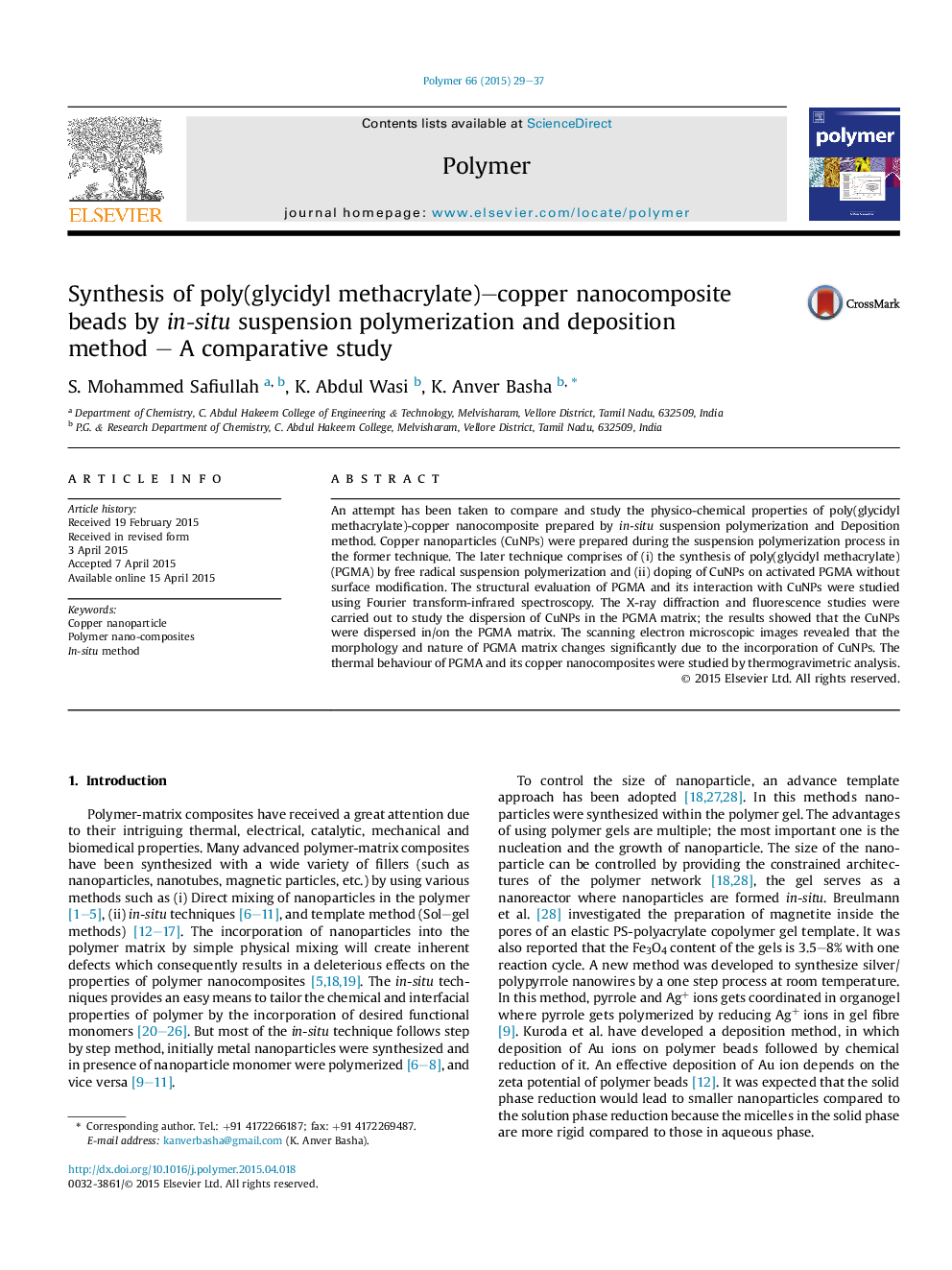| Article ID | Journal | Published Year | Pages | File Type |
|---|---|---|---|---|
| 5180375 | Polymer | 2015 | 9 Pages |
â¢PGMA-n-Cu nanocomposite have been prepared by in-situ method.â¢PGMA/Cu nanohybrids have been synthesized by deposition method.â¢The CuNPs were homogeneously distributed throughout the polymer matrix.â¢The CuNPs were deposited on the PGMA surface without surface modification.â¢Incorporation of CuNP on PGMA has a significant effect on morphology and thermal stability.
An attempt has been taken to compare and study the physico-chemical properties of poly(glycidyl methacrylate)-copper nanocomposite prepared by in-situ suspension polymerization and Deposition method. Copper nanoparticles (CuNPs) were prepared during the suspension polymerization process in the former technique. The later technique comprises of (i) the synthesis of poly(glycidyl methacrylate) (PGMA) by free radical suspension polymerization and (ii) doping of CuNPs on activated PGMA without surface modification. The structural evaluation of PGMA and its interaction with CuNPs were studied using Fourier transform-infrared spectroscopy. The X-ray diffraction and fluorescence studies were carried out to study the dispersion of CuNPs in the PGMA matrix; the results showed that the CuNPs were dispersed in/on the PGMA matrix. The scanning electron microscopic images revealed that the morphology and nature of PGMA matrix changes significantly due to the incorporation of CuNPs. The thermal behaviour of PGMA and its copper nanocomposites were studied by thermogravimetric analysis.
Graphical abstractDownload full-size image
